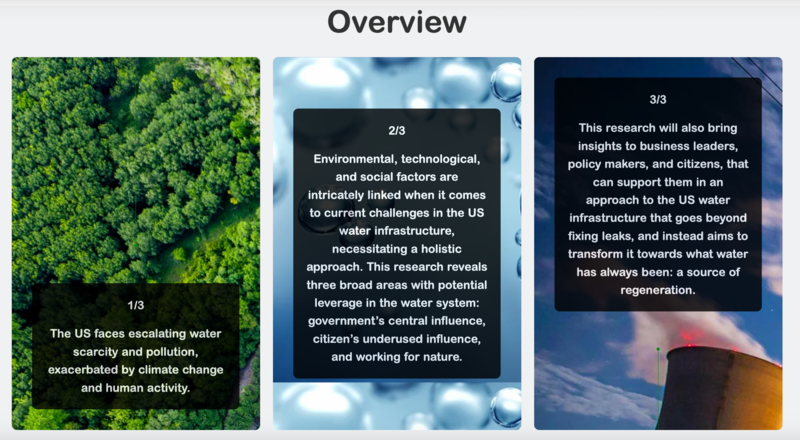United States water infrastructure: From fixing leaks to regenerating the system
Published on by Water Network Research, Official research team of The Water Network in Academic
Dear Reader, I’m pleased to present our research on the US water infrastructure in the United States (US). This paper is published at a pivotal moment. America’s water system is facing its fourth crisis in history: an infrastructure so outdated that it’s acerbating already rising challenges in water availability, affordability, and its safety for consumption. For this reason, the nation’s water infrastructure received the largest federal support for renewal in US history from the past administration.
Now, at global environmental tipping points for climate change, biodiversity loss, and pollution, technological acceleration, and societal developments like inequality and a new administration entering the White House, the matter of improving the US water infrastructure is as complex as it is crucial to the nation’s wellbeing.
The mission of the Sustainability Research Institute is to tackle precisely such pertinent and complex issues. Set up in 2020, the team is part of Schneider ElectricTM, a leader in the energy transition. With a purpose to bridge progress and sustainability for all, Schneider Electric aims to leverage its digital expertise and energy management and automation services for a just transition.
The Sustainability Research Institute serves to illuminate pathways in this unchartered territory. Dear Reader, By leveraging scientific research as well as the technical expertise of our colleagues, and by examining the facts in their contexts of broader social, environmental, technological and geopolitical shifts happening all around us, we strive to deliver independent and actionable research that identifies drivers for systemic change. For this purpose, our experts regularly speak at forums and our findings are publicly available online.
I hope this research will bring insights to business leaders, policy makers, and citizens, that can support them in an approach to the US water infrastructure that goes beyond fixing leaks, i.e., tweaking the system, and instead aims to transform it towards what water has always been: a source of regeneration. Gaya Herrington VP of Sustainability Research, Schneider Electric™ Sustainability Research Institute

01 Interconnected Challenges Environmental, technological, and social factors are intricately linked when it comes to current challenges in the US water infrastructure, necessitating a holistic approach.
02 Innovative Solutions
Concrete solutions include:
a) Financing water infrastructure maintenance and upgrades, by traditional and more innovative funding mechanisms, such as green bonds and payment for ecosystem services.
b) Digital solutions to improve water management, monitoring, and efficiency.
c) Respecting and supporting natural systems ability to restore ecosystems, reduce flood risks, and improve water quality.
03 Government's Central Role
The government is critical in regulating, funding, and policy-making to address water challenges. Local, state, and federal governments should prioritize water infrastructure investment, promote sustainable water policies, and encourage public-private partnerships.
04 Citizen Engagement
Public awareness and participation are essential in driving sustainable water practices. Educate the public about water conservation, encourage citizen participation in decision-making, and support community-based initiatives.
05 Cooperation and Collaboration
Effective implementation requires cooperation between the government, businesses, and citizens. Better alignment in planning, enhanced data transparency, and streamlined incorporation of equity aspects in practice actors in the US water system is necessary to address water challenges collectively.
Media
Taxonomy
- Research
- Sustainability
- Infrastructure
- Urban Water Infrastructure
- Research water quality
- Water Quality Research
- United States